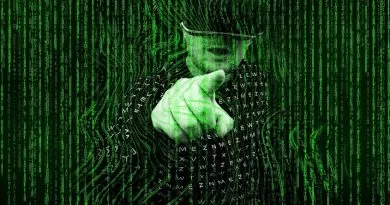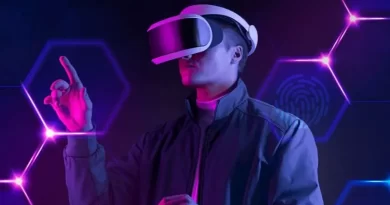From Simple Cubes to Advanced Augmentation: The High-Tech Evolution of Roblox Avatars
The explores the evolution of Roblox avatars from simple blocks to advanced augmented reality and artificial intelligence technology. The integration of these technologies allows for more interactive and immersive experiences within the Roblox metaverse.
Roblox is a massively popular virtual world platform that allows users to create their own games, socialize with friends, and even design their own virtual avatars. These avatars, which can range from simple blocks to highly detailed characters, are a key part of the Roblox experience and allow users to express themselves in the virtual world. In recent years, there has been a significant evolution in the technology used to create these avatars, with advances in 3D modeling, animation, and augmented reality (AR) driving the creation of more complex and realistic characters. In this article, we will explore the history of Roblox avatars and their evolution into highly customizable and advanced digital representations of ourselves. From the early days of basic block shapes to the cutting-edge technology of AR and AI, we will examine the latest trends and techniques for creating the hottest, cutest, and most impressive avatars in the Roblox world.
The Early Days: From Blocks to Basic Shapes
In the early days of Roblox, avatars were created using simple blocks and basic shapes in a limited color palette. The avatar creation tools available were very basic, with limited options for customization or personalization.
The limitations of early avatar creation tools meant that early Roblox avatars were often indistinguishable from each other, with little room for creativity or individuality. Despite these limitations, Roblox quickly gained popularity due to its unique user-generated content model and its innovative approach to social gaming.
Examples of early Roblox avatars include characters with blocky, rectangular bodies and simple, geometric features. These avatars often lacked detail and nuance, with limited options for customizing clothing, accessories, or other features.
Despite these limitations, early Roblox avatars were still able to capture the imagination of users and offer a unique, immersive gaming experience. As Roblox continued to evolve, the avatar creation tools became more sophisticated and offered more options for customization, leading to the creation of increasingly complex and detailed avatars.
The Rise of Customization: Clothing, Accessories, and More
Roblox avatars have come a long way since their inception as simple blocks and basic shapes. With the introduction of clothing and accessory customization options, Roblox users now have the ability to create truly unique avatars that express their individuality and creativity. This customization has had a significant impact on user engagement and has contributed to the growing popularity of Roblox as a social platform and creative outlet.
The introduction of customization options has allowed users to personalize their avatars in a variety of ways, including the addition of clothing, accessories, and unique features. This has led to a greater sense of ownership and investment in avatars, which has in turn driven increased user engagement and usage of the platform. Additionally, customization options have given users greater creative freedom, allowing them to experiment with different styles and create avatars that are truly one-of-a-kind.
Examples of customized Roblox avatars include black Roblox characters, cute Roblox girls, and the hottest Roblox avatars, among others. These avatars can range from simple outfits and accessories to more complex and intricate designs, showcasing the full range of creative possibilities that customization offers.
The Emergence of 3D Modelling and Animation for Roblox Avatars
The emergence of 3D modeling and animation tools has significantly impacted the creation of Roblox avatars. With these tools, developers have been able to create more complex and detailed avatars that are capable of more realistic movements and expressions.
The development of 3D modeling and animation tools for creating Roblox avatars
3D modeling and animation tools have been around for decades, but their integration into Roblox has enabled users to create more detailed and sophisticated avatars. These tools allow for the creation of avatars with more realistic textures, lighting, and shading. Some popular 3D modeling and animation tools used for creating Roblox avatars include Blender, Maya, and Cinema 4D.
The increasing complexity and detail of Roblox avatars
The use of 3D modeling and animation tools has led to a significant increase in the complexity and detail of Roblox avatars. Developers can create avatars with intricate clothing designs, detailed hair, and facial features that are capable of more realistic expressions. The introduction of physics engines has also enabled more realistic movement and interaction between avatars.
Examples of 3D-modeled Roblox avatars
The introduction of 3D modeling and animation tools has enabled the creation of a wide range of creative and unique Roblox avatars. Some popular 3D-modeled Roblox avatars include characters from popular movies and TV shows, animals, and creatures from fantasy worlds. These avatars can range from cute and adorable to fierce and menacing, depending on the creator’s preferences.
The Integration of Augmented Reality and AI
Roblox has come a long way from its early days of simple blocky avatars. As technology advances, the platform has evolved to incorporate augmented reality (AR) and artificial intelligence (AI) to create more interactive and engaging avatars. Here are some key points about this integration:
AR and AI technologies are being used to enhance the functionality of Roblox avatars.
AR allows for virtual objects to be overlaid in the real world, while AI enables avatars to respond to user input and environmental changes in real time. This integration allows for more immersive and interactive experiences within the Roblox metaverse.
The potential of AR and AI to enhance the functionality and interactivity of avatars
With the integration of AR and AI, avatars can now respond to user input in more sophisticated ways. For example, avatars can track a user’s facial expressions and mimic them in real time, allowing for more personalized and realistic interactions. Additionally, AR can be used to place avatars in the real world, creating a more seamless transition between virtual and physical environments.
Examples of AR and AI-enabled Roblox avatars include the Black Roblox Character, cute Roblox characters, and the hottest Roblox avatars. These avatars use advanced technologies to create a more realistic and engaging experience for users. For instance, the Black Roblox Character uses AR to blend seamlessly into the physical environment, while the cute and hottest Roblox avatars use AI to respond to user input and create more personalized interactions.



